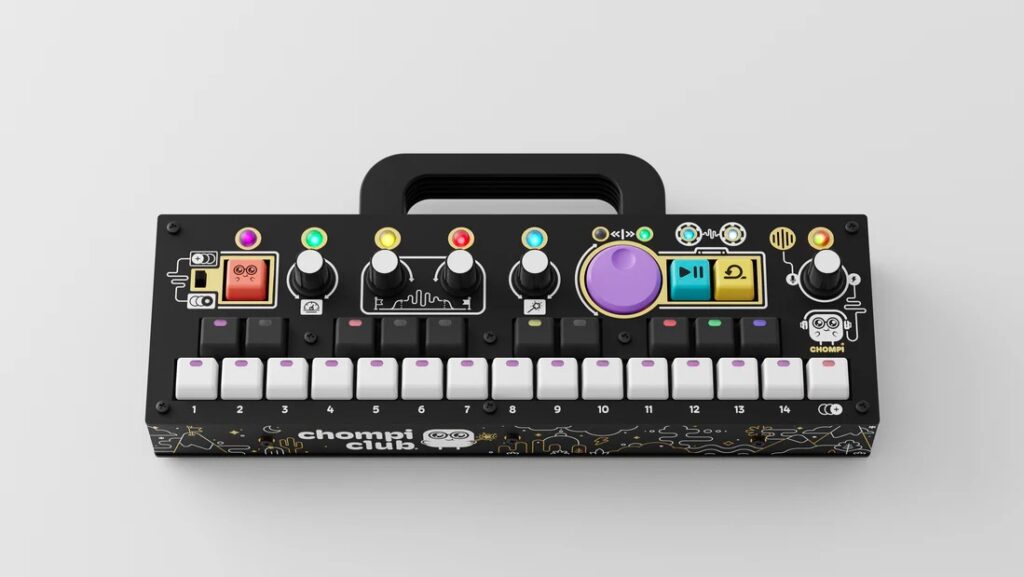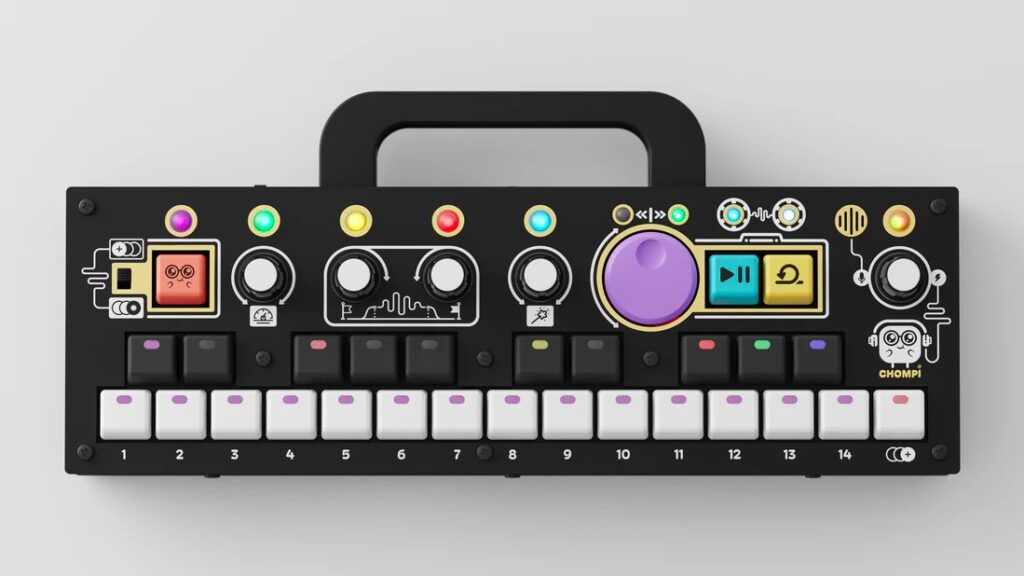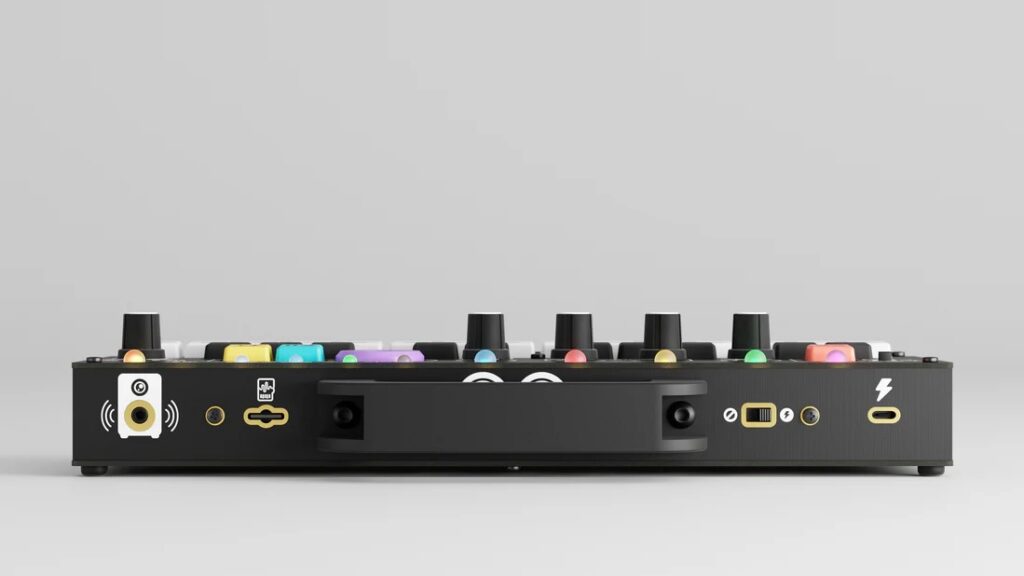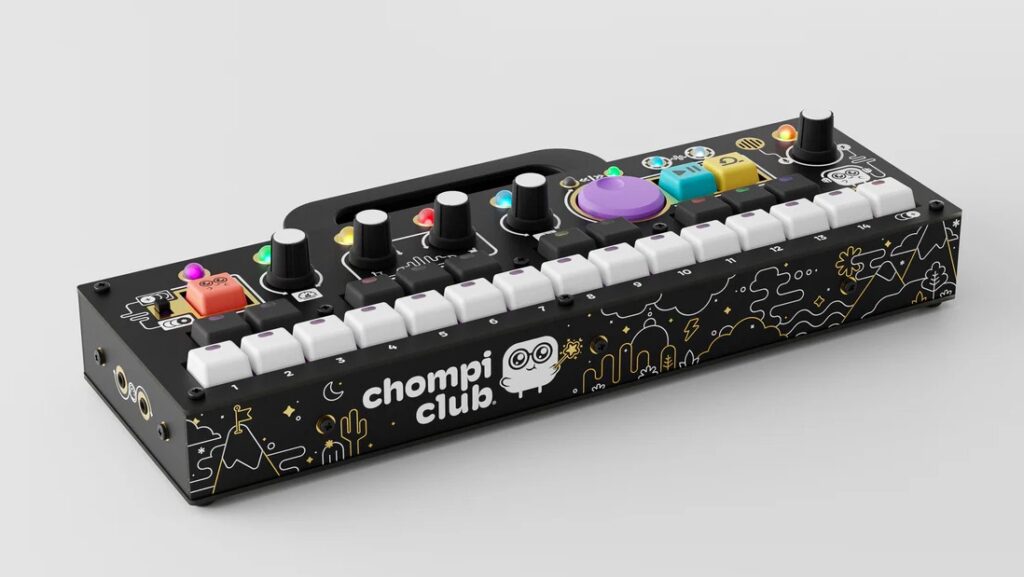Don’t be fooled by the fun approach of this quirky sampler instrument. Greg Scarth finds out why the Chompi should be taken seriously as a sound design and composition tool.

Every now and again an instrument comes along with a sense of humour attached. Chompi Club’s Chompi is a prime example. Launched off the back of a successful $1m crowdfunding campaign, it would be easy to assume that this quirky little device, with its bright colours and analogue tape-style workflow, is just a toy. Don’t be fooled.
Developed on Electro-Smith’s Daisy platform and assembled in California, the Chompi is probably best described as a tape-inspired sampler/loop instrument. The customisable interface is based around mechanical Cherry MX switches, which give the whole thing a kitsch retro appeal, backed up by the simple retro approach.

The Chompi’s creators claim to have been inspired by video game mechanics in terms of how you go about learning the instrument’s workflow. Instead of jumping in and battling end level bosses, you’re encouraged to step gently through each of the basic features until everything comes together. The screenless workflow of the Chompi proves to be quite intuitive once you get started, with dedicated controls for sample playback speed/direction, envelope settings (including sample start and end points), looping, effects and so on. Each encoder has multiple functions, activated by pushing to change parameter, effectively like a tiny, simple menu for each control. Multi-colour LEDs reflect current settings or values of parameters for each control, making it simple to navigate your way through sampling (Chompi mode), sound design (Jammi mode) and tape-style looping.

The immediacy of sampling via the internal microphone is backed up by more ‘serious’ options in the form of a stereo line input. Likewise, the simplicity of the two-octave mechanical keyboard is supplemented by MIDI in and out, either over USB-C or via 3.5mm sockets on the left-hand side of the unit. Although the Chompi is still a very new product, it’s worth noting that early signs about firmware updates already look good. Minor updates (up to version 1.0.9 at the time of writing have added and tweaked features like gain and pan control per sample, external effects send routing and configurable ‘default states’ (the settings you’re presented with upon turning on the unit). Although it’s pitched as a sampler and revolves heavily around the tape-based looping approach, what might go under the radar is just how good the Chompi is as a sound design tool. The varispeed, clockless concept of the tape-style sound engine might not necessarily lend itself to working as part of a conventional clocked MIDI setup, but the sound design aspect alone makes the Chompi a surprisingly versatile tool for creating loops, drones or even just unique sample-based synth sounds.

Although they do quite different things in quite different ways, there’s something very reminiscent of Teenage Enginering’s OP-1 here; both instruments take a playful approach to sound which makes them quite unique offerings. Our only minor complaint with the Chompi is that the built-in handle as part of the case suggests a level of portability which isn’t quite there in practice; you can use the unit with headphones and a USB power pack, but at that point the whole setup becomes a bit less portable and immediate than you’d hope. Perhaps a basic built-in speaker and the option to run on internal batteries would be nice as part of a future upgraded version?
Despite that small gripe, the Chompi is a hugely charming little thing, ideally suited to drones and experimental layering of sounds on top of each other, but capable of sparking new ideas and generating sketches which could be worked into full arrangements. It’s a completely different proposition to something like a Roland SP-404, but one which should be taken seriously as an instrument despite its cutesy looks and unorthodox approach.
Greg Scarth
More info/buy